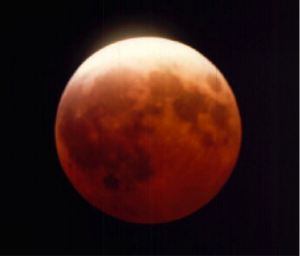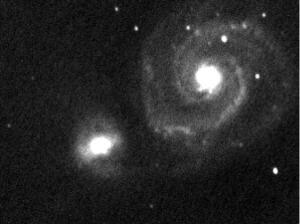Tim’s Photo of the Whirlpool Galaxay
I like the word the constellation. It conjures imaginings of the night sky: vast, wondrous, mysterious manifestations of light that draw “me” out of “my self”. Gazing inward and upward I experience being beyond knowing. Out there alone together, together alone. Yes, another metaphor is coming on. I am part of a constellation of caring as family member, friend, body worker and human being. We shine alone and together in a myriad of different ways, intimate and distant, radiant and dim.
Yesterday in yoga class and massage sessions I worked with people living through different stages of life. Each brought their own experience of discomfort and ease: neck, shoulders and hands; back, hips and knees at different stages of healing or simply wear. In reflecting on the day’s exchanges I realized: We can share movement and touch yet healing is prescribed by the degree to which we can light our selves and each other with presence. When we bring our awareness to felt experience again and again as it ever changes.
Sometimes movement or touch can relieve the pain of illness of injury. Those sometimes pains are inevitable, yet we’re often surprised to meet them. When you consider the many ways that things can go “wrong”, it is our relatively healthful condition that is really the miracle. Today, family members, dear friends and many acquaintances are in some stage of healing and living with cancer, heart disease, stroke and a variety of conditions that give pain and take away function.
I’ve found meditation to be a very helpful (and sometimes the only) practice in meeting illness, injury and pain in myself and others. Thanissaro Bhikku is an American Theravada Buddhist monk who is abbot of the Metta Forest Monastery in San Diego. He teaches and writes extensively about how we can use meditation to prepare ourselves for these meetings. He says that:
“. . . an important function of meditation — in giving you a solid center that provides you a vantage point from which to view life in its true colors — is that it keeps you from feeling threatened or surprised when the body begins to reassert its independence.”
In his talk, “Using Meditation to Deal with Pain, Illness & Death,” he encourages us to think about these issues and to prepare for them the most helpful way we can: with meditation. He offers “a users manual for meditation to help you when the chips are down.” He begins by instructing us to aspire that we be truly happy and free from suffering. If we reflect on what and where true happiness is we come to realize the only place we can find it is here in this present moment. He describes meditation as a “treasure hunt” to find what has “solid and unchanging worth in the mind . . .”
So our first step is to develop goodwill for ourselves, then we spread good will to other living beings. In this way we clear our minds and prepare for meditation. He outlines a breathing meditation and offers helpful techniques we can use when experiencing pain. He describes the various mind states that you may encounter with practice and suggests a variety of ways you can shift the focus of your awareness when in pain. His words ring true to me. I can sense he knows this territory. He draws from the personal experience using these tools to cope with his own life threatening illness. He says:
“You should be very clear on this point: the purpose of meditation is to find happiness and well being within the mind, independent of the body or other things going on outside.”
Wow. We have the potential to take refuge, to find sanctuary in our minds and it’s a place of our own making. Of course, the practice of making this sanctuary is optional.
We are a constellation of people encountering illness and pain in our selves or in caring for others. Our impulse to care seems like a natural endowment: as beautiful, varied and unknowable as the night sky. The light is always there. Last night I could see the moon, partially cloaked in clouds. It was beautiful.
Tim’s Photo of Lunar Eclipse

